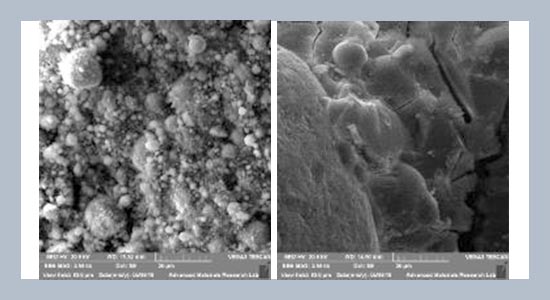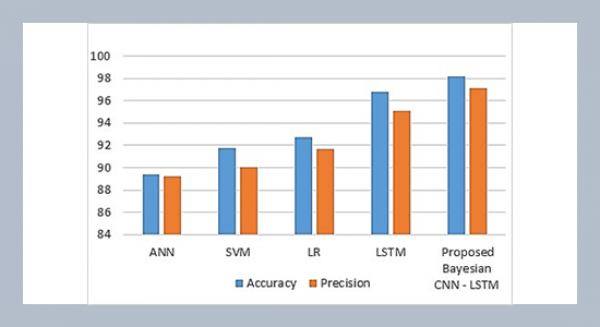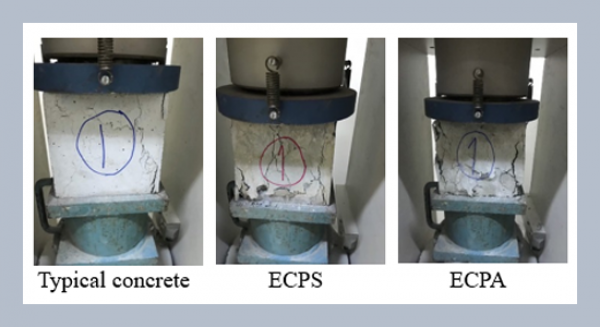REFERENCES
- Ahmed, F.B., Biswas, R.K., Ahsan, K.A., Islam, S., Rahman, M.R. 2021. Estimation of strength properties of geopolymer concrete, Materials Today: Proceedings. Elsevier Ltd, (xxxx). doi: 10.1016/j.matpr.2021.03.002.
- ASTM C39/C39M - 16b, 2016. Standard test method for compressive strength of cylindrical concrete specimens, ASTM International, 1–7. doi: 10.1520/C0039.
- ASTM C496, 2006. Standard test method for splitting tensile strength of cylindrical concrete specimens, ASTM International, 1–5. doi: 10.1520/C0496.
- Binici, H. 2013. Engineering properties of geopolymer incorporating slag, fly ash, silica sand and pumice, Advances in Civil and Environmental Engineering, 01, 108–123.
- Chandrakanth, V., Koniki, S. 2020. Effect of elevated temperature on geo-polymer concrete - A Review, E3S Web of Conferences, 184, 1–4. doi: 10.1051/e3sconf/202018401090.
- Chindaprasirt, P., De Silva, P., Sagoe-Crentsil, K., Hanjitsuwan, S. 2012. Effect of SiO2 and Al2O3 on the setting and hardening of high calcium fly ash-based geopolymer systems, Journal of Materials Science, 47, 4876–4883. doi: 10.1007/s10853-012-6353-y.
- Collins, M.P., Mitchell, D., MacGregor, J.G. 1993. Structural design considerations for high-strength concrete, Concrete International, 15, 27–34.
- Davidovits, J. 1991. Geopolymers - Inorganic polymeric new materials, Journal of Thermal Analysis, 37, 1633–1656. doi: 10.1007/BF01912193.
- Davidovits, J. 1994. Global warming impact on the cement and aggregate industries, 6, 263–278.
- Davidovits, J., Orlinski, J. (Eds.) 1988. Soft mineralurgy and geopolymers, Proceedings of the 1st International Conference on Geopolymer ’88, 1, 25–48.
- Deb, P.S., Nath, P., Sarker, P.K. 2014. The effects of ground granulated blast-furnace slag blending with fly ash and activator content on the workability and strength properties of geopolymer concrete cured at ambient temperature, Materials and Design. Elsevier Ltd, 62, 32–39. doi: 10.1016/j.matdes.2014.05.001.
- Diaz, E.I., Allouche, E.N., Eklund, S. 2010. Factors affecting the suitability of fly ash as source material for geopolymers’, Fuel. Elsevier Ltd, 89, 992–996. doi: 10.1016/j.fuel.2009.09.012.
- Diaz-Loya, E.I., Allouche, E.N., Vaidya, S. 2011. Mechanical properties of fly-ash-based geopolymer concrete, ACI Materials JournalMaterials Journal, 108, 300–306.
- Duxson, P., Fernández-Jiménez, A., Provis, J.L., Lukey, G.C., Palomo A., van Deventer, J.S.J. 2007. Geopolymer technology: The current state of the art, Journal of Materials Science, 42, 2917–2933. doi: 10.1007/s10853-006-0637-z.
- Fernández-jiménez, A. 2006. Engineering properties of alkali-activated fly ash concrete, ACI Materials Journal, 103. doi: 10.14359/15261.
- Ganesh, A.C., Muthukannan, M. 2018. A review of recent developments in geopolymer concrete, International Journal of Engineering & Technology, 7, 696. doi: 10.14419/ijet.v7i4.5.25061.
- Hardjito, D., Cheak, C.C., Ing, C.H.L. 2008. Strength and setting times of low calcium fly ash-based geopolymer mortar, Modern Applied Science, 2, 3–11. doi: 10.5539/mas.v2n4p3.
- Hassan, A., Arif, M., Shariq, M. 2019. Use of geopolymer concrete for a cleaner and sustainable environment – A review of mechanical properties and microstructure, Journal of Cleaner Production. Elsevier B.V., 223, 704–728. doi: 10.1016/j.jclepro.2019.03.051.
- Junaid, M.T., Kayali, O., Khennane, A., Black, J. 2015. A mix design procedure for low calcium alkali activated fly ash-based concretes, Construction and Building Materials. Elsevier Ltd, 79, 301–310. doi: 10.1016/j.conbuildmat.2015.01.048.
- Junaid, M.T., Khennane, A., Kayali, O. 2015. Performance of fly ash based geopolymer concrete made using non-pelletized fly ash aggregates after exposure to high temperatures, Materials and Structures/Materiaux et Constructions, 48, 3357–3365. doi: 10.1617/s11527-014-0404-6.
- Junaid, M.T., Khennane, A., Kayali, O. 2016. Stress-strain behaviour of alkali activated fly-ash concrete at elevated temperatures, 2nd International Conference on Advances in Cement and Concrete Technology in Africa.
- Junaid, M.T., Khennane, A., Kayali, O., Sadaoui, A., Picard, D., Fafard, M. 2014a. Aspects of the deformational behaviour of alkali activated fly ash concrete at elevated temperatures, Cement and Concrete Research. Elsevier Ltd, 60, 24–29. doi: 10.1016/j.cemconres.2014.01.026.
- Junaid, M.T., Khennane, A., Kayali, O., Sadaoui, A., Picard, D., Fafard, M. 2014b. Aspects of the deformational behaviour of alkali activated fly ash concrete at elevated temperatures, Cement and Concrete Research. Elsevier Ltd, 60, 24–29. doi: 10.1016/j.cemconres.2014.01.026.
- Junaid, T.M., Kayali, O., Khennane, A. 2017. Response of alkali activated low calcium fly-ash based geopolymer concrete under compressive load at elevated temperatures, Materials and Structures/Materiaux et Constructions. Springer Netherlands, 50, 1–10. doi: 10.1617/s11527-016-0877-6.
- Kong, D., Sanjayan, J., Sagoe-Crentsil, K. 2006. The behaviour of geopolymer paste and concrete at elevated temperatures, in International Conference on Pozzolan, Concrete and Geopolymer, Khon Kaen, Thailand, 105–118.
- Lee, N.K., Lee, H.K. 2013. Setting and mechanical properties of alkali-activated fly ash/slag concrete manufactured at room temperature, Construction and Building Materials. Elsevier Ltd, 47, 1201–1209. doi: 10.1016/j.conbuildmat.2013.05.107.
- Li, Y., Shen, L., Mirmoghtadaei, R., Ai, L. 2017. A Design of Experiment Approach to Study the Effects of Raw Material on the Performance of Geopolymer Concrete, Advances in Civil Engineering Materials, 6, 526-549. https://doi.org/10.1520/ACEM20160007.
- Lloyd, N.A., Rangan, B.V. 2010. Geopolymer concrete with fly ash, Sustainable Construction Materials and Technologies, 7, 1–12. doi: 10.1063/1.4775784.
- Malhotra, V.M. 2002. Introduction: Sustainable development and concrete technology, Concrete International, 24, 22.
- McCaffrey, R. 2002. Climate change and the cement industry, GCL Magazine, 5. doi: 10.1001/jama.275.18.1405.
- Mindess, S., Young, J.F., Darwin, D. 2003. Concrete. Pearson Education Inc.
- Nath, P., Sarker, P.K. 2014. Effect of GGBFS on setting, workability and early strength properties of fly ash geopolymer concrete cured in ambient condition, Construction and Building Materials. Elsevier Ltd, 66, 163–171. doi: 10.1016/j.conbuildmat.2014.05.080.
- Nath, P., Sarker, P.K. 2015. Use of OPC to improve setting and early strength properties of low calcium fly ash geopolymer concrete cured at room temperature, Cement and Concrete Composites. Elsevier Ltd, 55, 205–214. doi: 10.1016/j.cemconcomp.2014.08.008.
- Nath, P., Sarker, P.K. 2017. Flexural strength and elastic modulus of ambient-cured blended low-calcium fly ash geopolymer concrete, Construction and Building Materials. Elsevier Ltd, 130, 22–31. doi: 10.1016/j.conbuildmat.2016.11.034.
- Neville, A.M., Brooks, J.J. 2010. Concrete technology. Second, Pearson Education Limited. Second. England: Pearson.
- Ravikumar, D., Peethamparan, S., Neithalath, N. 2010. Structure and strength of NaOH activated concretes containing fly ash or GGBFS as the sole binder, Cement and Concrete Composites. Elsevier Ltd, 32, 399–410. doi: 10.1016/j.cemconcomp.2010.03.007.
- Shehab, H.K., Eisa, A.S., Wahba, A.M. 2016. Mechanical properties of fly ash based geopolymer concrete with full and partial cement replacement, Construction and Building Materials. Elsevier Ltd, 126, 560–565. doi: 10.1016/j.conbuildmat.2016.09.059.
- Shrivas, R., Paramkusam, B.R., Dwivedi, S.B. 2021. Effect of alkali concentration on strength development in jointly activated pond ash-GGBFS mixtures through geopolymeric reactions, KSCE Journal of Civil Engineering. doi: 10.1007/s12205-021-1869-9.
- Soutsos, M., Boyle, A.P., Vinai, R., Hadjierakleous, A., Barnett, S.J. 2016. Factors influencing the compressive strength of fly ash based geopolymers, Construction and Building Materials. Elsevier Ltd, 110, 355–368. doi: 10.1016/j. conbuildmat.2015.11.045.
- ASTM C78 / C78M-21, Standard test method for flexural strength of concrete (Using Simple Beam with Third-Point Loading), ASTM International, West Conshohocken, PA, 2021, www.astm.org
- ASTM C469 / C469M-14e1, Standard test method for static modulus of elasticity and Poisson's ratio of concrete in compression, ASTM International, West Conshohocken, PA, 2014, www.astm.org
- Topark-Ngarm, P., Chindaprasirt, P., Sata, V. 2015. Setting time, strength, and bond of high-calcium fly ash geopolymer concrete, Journal of Materials in Civil Engineering, 27, 04014198. doi: 10.1061/(ASCE) MT.1943-5533.0001157.
- US Geological-Survey, 2013. Mineral commodity summaries 2013. doi: 10.3133/mineral2013.
- Van Jaarsveld, J.G.S., Van Deventer, J.S.J., Lukey, G.C. 2002. The effect of composition and temperature on the properties of fly ash-and kaolinite-based Geopolymers, Chemical Engineering Journal, 89, 63–73.
- Wattimena, O.K., Antoni, Hardjito, D. 2017. A review on the effect of fly ash characteristics and their variations on the synthesis of fly ash based geopolymer, AIP Conference Proceedings, 1887. doi: 10.1063/1.5003524.
- Xie, J., Kayali, O. 2014. Effect of initial water content and curing moisture conditions on the development of fly ash-based geopolymers in heat and ambient temperature, Construction and Building Materials. Elsevier Ltd, 67, 20–28. doi: 10.1016/j.conbuildmat.2013.10.047.
- Yadollahi, M.M., Benli, A. 2017. Stress-strain behavior of geopolymer under uniaxial compression, Computers and Concrete, 20, 381–389. doi: 10.12989/cac.2017.20.4.381















